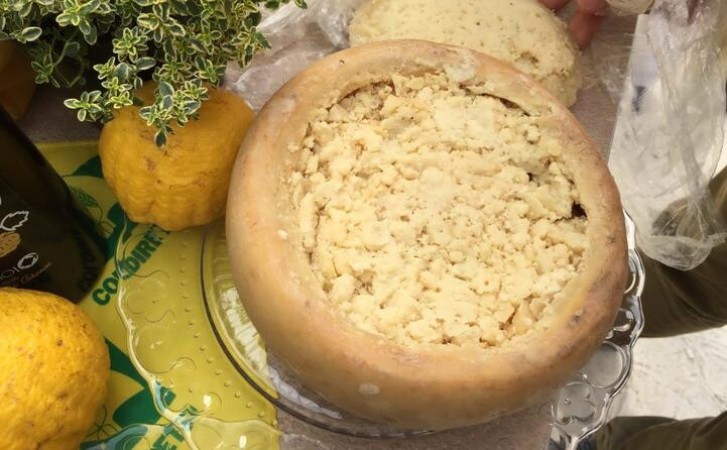
The Italian island of Sardinia sits in the middle of the Tyrrhenian Sea, gazing at Italy from a distance. Surrounded by a 1,849-kilometer coastline of white sandy beaches and emerald waters, the island's inland landscape rapidly rises to form hills and impervious mountains.
And it is within these edgy curves that shepherds produce casu marzu, a maggot-infested cheese that, in 2009, the Guinness World Record proclaimed the world's most dangerous cheese.
Cheese skipper flies, Piophila casei, lay their eggs in cracks that form in cheese, usually fiore sardo, the island's salty pecorino.
Maggots hatch, making their way through the paste, digesting proteins in the process, and transforming the product into a soft creamy cheese.
Then the cheesemonger cracks open the top -- which is almost untouched by maggots -- to scoop out a spoonful of the creamy delicacy.
It's not a moment for the faint-hearted. At this point, the grubs inside begin to writhe frantically.
Some locals spin the cheese through a centrifuge to merge the maggots with the cheese. Others like it au naturel. They open their mouths and eat everything.
If you are able to overcome the understandable disgust, marzu has a flavor that is intense with reminders of the Mediterranean pastures and spicy with an aftertaste that stays for hours.
Some say it's an aphrodisiac. Others say that it could be dangerous for human health as maggots could survive the bite and and create myiasis, micro-perforations in the intestine, but so far, no such case has been linked to casu marzu.
The cheese is banned from commercial sale, but Sardinians have been eating it, jumping grubs included, for centuries.
"The maggot infestation is the spell and delight of this cheese," says Paolo Solinas, a 29-year-old Sardinian gastronome.
He says some Sardinians cringe at the thought of casu marzu, but others raised on a lifetime of salty pecorino unabashedly love its strong flavors.
"Some shepherds see the cheese as a unique personal pleasure, something that just a few elects can try," Solinas adds.
Yet, if you are adventurous enough, it's possible to find the casu marzu. It shouldn't be seen as a weird attraction, but a product that keeps alive an ancient tradition and hints at what the future of food might look like.
Giovanni Fancello, a 77-year-old Sardinian journalist and gastronome, spent his life researching local food history. He's traced it back to a time when Sardinia was a province of the Roman empire.
There is no written record of Sardinian recipes until 1909, according to Fancello. That's when Vittorio Agnetti, a doctor from mainland Modena, traveled to Sardinia and compiled six recipes in a book called "La nuova cucina delle specialità regionali."
"But we have always eaten worms," says Fancello. "Pliny the Elder and Aristotle talked about it."
Ten other Italian regions have their variant of maggot-infested cheese, but while the products elsewhere are regarded as one-offs, casu marzu is intrinsically part of Sardinian food culture.
The cheese has several different names, such as casu becciu, casu fattittu, hasu muhidu, formaggio marcio. Each sub-region of the island has its own way of producing it using different kinds of milk.
Try this refreshing lemonade with a twist
An apple a day is 100 million bacteria for your gut. But it is not all bad news